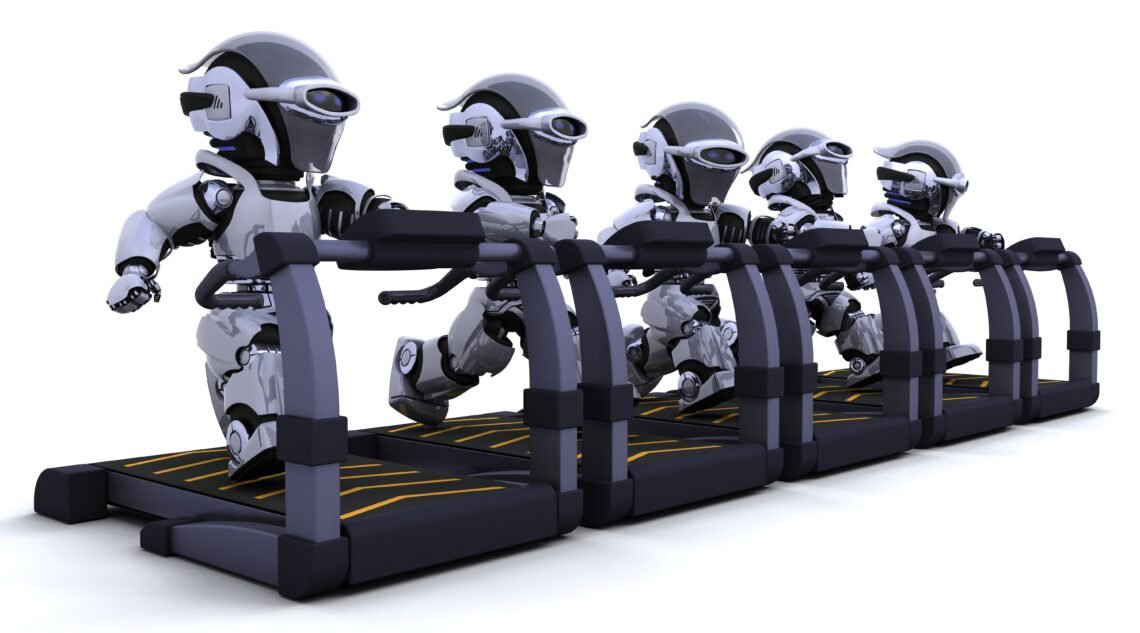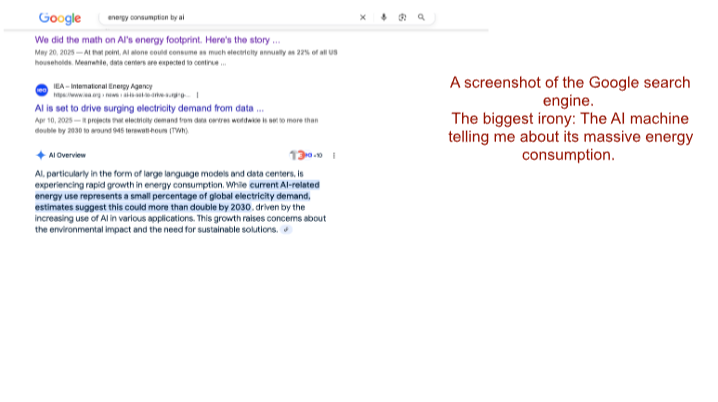
The AI Rush
Every time I open the Google search engine, the ever present AI machine is ready with
suggestions – reading, accumulating, categorizing the information for me. Did I ask for
it? No! I’m perfectly capable of reading a couple of websites, do a comprehension
research to make my own decisions. However, it is forced down my throat. The image of
a mother bird, putting food deep inside her baby’s beak conjures up. I wonder if AI is the
next Oil?

Every single person on this planet right now (perhaps, am exaggerating!) from a
common person to powerful institutions want a piece of the AI pie. Not surprisingly,
educational institutions have joined this rat race, pushing teachers to include AI in their
lessons.
ChatGPT has taken the world by storm (pardon the cliche). Travelling on public
transport, I see many people asking it to draft their emails or plan their vacations. Every
little task which the human brain is capable of doing, has been handed over to GPT. I
too have tried my hands at ChatGPT for editing purposes. It certainly doesn’t sound
anything like me. It killed my voice! Do I still use it? Sometimes, but very guiltily. You
may wonder why do I feel guilty for using AI. For someone who preaches, eats, breaths
a sustainable way of living, it is a contrary action. And, here’s why:
We all know that social media platforms through algorithms track what we see. You can
imagine, my insta account is full of content related to environmental sustainability. Some
I agree with, some I don’t, nevertheless it’s there! That is where I first encountered a
video on someone talking about the massive energy consumption by AI. (On a side
note, I wish I had saved the link to acknowledge the source). However, like any good
researcher I decided to read further about it rather than believing it with closed eyes.
And bingo, there it was!
According to MIT, GPT-4 consumed 50 gigawatt-hours of energy, apparently enough to
power San Francisco for 3 days. Let’s not talk about the money, which was over $100
billion dollars. To add fuel to the fire, there are approximately 3000 data centers that
house servers and cooling systems, run by— no surprise there—corporate giants like
Amazon and Microsoft.
Prof Shaolei Rei, calls servers “hungry and thirsty.” Without going into the science of it,
which was pretty mind-boggling for me— AI servers are water guzzlers. And wait for it
— it guzzles fresh water! To train a massive language model like GPT-3 it took millions
of litres of fresh water. Where is this water coming from in a world where we are facing
gigantic water crises? Where we humans and non-humans alike need fresh water to
sustain ourselves? Where our forests are dying due to increasing wild fires? In schools,
we teach children how the human body is made up of water and how much water is
available in the world for actual consumption. There are places around the world where
once fertile land is dead, and severe drought has effected the region. And yet, the Tech
giants continue to receive millions of gallons of fresh water to “cool” the servers.
And that’s not all, AI increases air pollution, electric waste and let’s not forget it also
contributes to mining. Critical minerals and rare materials are mined unsustainably from
the global South to support the continued creation and production of these digital
technologies. No wonder, the tech giants and fossil fuel producers are hand in glove.

Why can’t we talk about climate change and use AI to teach the same lesson?
This brings me to the question of using AI for educational purposes. For the past couple
of years, I have witnessed numerous conference sessions, webinars on teacher training
on how to use AI responsibly in their classrooms, or how AI can be used as a teaching
tool; because we all know that we cannot stop our students from using AI on the sly for
assignments. Recently, I watched a webinar on Teaching English website. The teacher
advocated for using gender neutral pronouns to raise awareness on LGBTQ issues ( a
worthy cause I must say because heteronormativity is a definite problem in our
textbooks). Anyhow, I’m deviating, the reason I mention it as an example here is
because the students were asked to put specific prompts in ChatGPT to alter the lesson
to create gender neutral pronouns. Again, I must applaud the lesson plan and the
activities. But, could we have done the same without AI? We certainly could have.
AI servers are housed in different parts of the globe. Depending on where you are, what
kind of questions you ask, on your phone or web browser the energy consumption is
determined. But, shhh! it’s a trade secret how your data is routed, how much energy is
consumed, how much carbon is released in the atmosphere, and how much water is
then required to keep the servers cool as they run 24/7 answering the million pings as
the servers operate throughout the day and night.
Now here’s an interesting Math problem which by no means I can solve, but would
make a good lesson.
Running GPT-3 inference for 10-50 queries consumes 500 millimetres of water. How
much water it might require if a class full of 20 students are using the platform to create
a lesson plan using very specific parameters. Imagine that each student by trial and
error ends up asking at least 6 questions to get to the end goal ( a few factors are
missing here in terms of the students’ location and the hosting space of the AI model,
which anyhow is a trade secret).
So can we really talk about environmental sustainability — on the one hand create
climate change lessons, and on the other preach the use of AI in our classrooms? My
guess is not. At least, I wouldn’t.
Instead, we could design lessons that educate our learners about AI’s harmful impact
to bring more awareness in an every increasing consumerist world. You never know,
you might deter the use of technology in the long run, instead of adding to its
consumption.
What’s more! We are telling our learners that in the future, you as a teacher might
become redundant, because the bot is going to create and teach the lessons. Your
learners would think that becoming a teacher is a breeze, because they don’t need to
learn how to create lesson plans. Is this the world we want our children to be part of?
In case, my readers, you are wondering if I used ChatGPT to edit this piece — I can
proudly say that I didn’t. My editing skills were becoming poor as GPT took over my
brain. Hence, a few errors here and there might be there. After all, I’m only human and
not a machine.
References:
https://www.technologyreview.com/2025/05/20/1116327/ai-energy-usage-climate-footprint-big-
tech/
https://oecd.ai/en/wonk/how-much-water-does-ai-consume
https://news.ucr.edu/articles/2024/12/09/ais-deadly-air-pollution-toll
https://www.unep.org/news-and-stories/story/ai-has-environmental-problem-heres-what-world-
can-do-about

